Franchise Corner Entry: RING
Note:
It’s impossible to truly pin down which films constitute the “RING” franchise. RINGU itself was preceded by a TV movie adaptation of the novel three years earlier (also called RINGU, and largely forgotten). It’s also usually overlooked that RINGU was remade in South Korea just one year later as RING – the same year as a Japanese TV mini-series was adapted from the book. To complicate things further, the adaptation RASEN was released simultaneously in Japan with RINGU, using some of the same actors and technician. The much later SADAKO 3-D (2012) and SADAKO 2 3-D (2013) are considered direct sequels, even though RASEN was a comparative failure to the hugely successful RINGU. Much more recently, the gimmicky SADAKO V KAYAKO (2016) reduced the antagonists of the RING and GRUDGE films to the level of a spooky GODZILLA movie.
All of these movies should be considered either alternative adaptations of the original novel or spin-offs cashing in on the success and brand-name recognition of both RINGU and Sadako herself. Therefore, to keep things simple, this Franchise Corner entry covers the original Japanese RINGU trilogy and the trio of American remakes that recreated the saga for Hollywood audiences.
RINGU ***** Japan 1998 Dir: Hideo Nakata. 91 mins
Japan’s response to the crossover mainstream success of snarky American teen horrors like SCREAM was to recreate the slow burn sustained dread of its most famous cinematic ghost stories (ONIBABA, KWAIDAN) in a modern setting. It takes inspiration from its U.S. counterparts –a prologue positions its plot as a popular teenage urban legend a la CANDYMAN – while immediately establishing its own identity. Divorced reporter Matsushima Nanako becomes fascinated by the deaths of two young girls via a cursed videotape whose disturbing, grainy imagery is followed by an ominous phone call and certain death seven days later. In the name of research, she watches the tape, becoming convinced of her fate (and that of her ex-husband and young son) before unravelling its origins.
Structurally conventional, RINGU sets its rules (the accursed can be saved by copying the tape and sharing it) while cleverly using the tools of modern American horror (malevolent telephone calls, the invasive menace of television and video). Nakata proves a master at drip-feed malevolence, forsaking self-conscious humour and visceral horror in favour of a suffocating sense of impending doom. Nanako, one of several independent though emotionally fraught female leads in modern J-horror, is a refreshingly mature heroine, and her plight (and that of Sadako, the pre-pubescent, persecuted “antagonist”) earns our sympathy. Avoiding the crass jump scares that would quickly become tired in later Japanese ghost stories (and American remakes), Nakata never jeopardises the carefully crafted atmosphere, though delivers the greatest set piece of 1990’s horror : in a terrifying variation on gaudier scenes in 80’s horror like DEMONS 2 and THE VIDEO DEAD, Sadako slithers slowly through a TV set, her long black hair covering her entire face except for one horribly staring eye. This image became the defining one of new-wave J-horror, though the marvellously grim, avant-garde videotape itself is unforgettable, and the subtly devastating final scene – a character on a seemingly endless mission to halt a curse that can only spread inexorably – is among the bleakest of modern horror’s nihilistic endings.
RING 2 **** Japan 1999 Dir: Hideo Nakata. 95 mins
A rare genre sequel that genuinely expands upon its predecessor while duplicating the mystery structure of RINGU (new journalistic characters search for that film’s heroine and resume her investigation). Nakata’s command of the medium is apparent immediately: a chilling opening stretch unveils Sadako’s corpse – retrieved from the well after three decades – via the shrill shriek of a morgue gurney. We glimpse the chilling aftermath of RINGU’s most famous death: a shattered TV, two VCRs connected to each other and a charred, putrid videotape in the bathtub. The emphasis is again on drip-feed dread, with occasional overt jolt-scares involving Sadako’s fleeting appearances. The strongest moments are the quietest, notably a remarkable sequence in a psychiatric ward where slow corridor dolly shots escalate to outright hysteria when an ordinary TV broadcast morphs into The Video. RINGU’s heroine returns as a credibly haunted and bitter supporting presence, while Nakata expands upon Sadako’s psychic power, enhanced by 30 years of fury. Restraint throughout means a bigger impact when the film becomes relatively explicit, as when an “accident” victim’s blood pools unnaturally toward RINGU’s surviving pre-pubescent Yoichi. The film riffs to some degree on THE EXORCIST (gruelling medical tests) and CANDYMAN (a final creep-out suggesting an unbroken cycle of terror), while Nakata captures scenes of real alarm when the images from the original grainy video morph into the film’s modern, colour reality. The key shock this time is Sadako (horrific features covered by an equally unnerving blank burial mask) slithering out of her original watery grave to scare our heroine and young Yoichi.
RING 0: BIRTHDAY *** Japan 2000 Dir : Norio Tsuruta. 99 mins
Although it continues the series standard of a journalist protagonist researching Sadako’s background, the finale of the original Japanese RING trilogy is a sombre prequel with only a brief, modern-day prologue directly tying it to the contemporaneous first two movies (the prologue itself, with its fast cuts and quick pans, is technically alien to the preceding films). After the 21st century opening, we skip to 30 years earlier and follow the melancholic teenage life of Sadako (Yukie Nakama), alienated from her drama troupe and winning a prominent role in a play named “The Mask” when one of them dies mysteriously. Haunted by visions, Sadako starts displaying Carrie-esque powers in a movie following the deliberate pacing of Nakata’s RING films while invoking chills from small moments such as Sadako’s mum malevolently brushing her hair. As with many prequels, you are left with the feeling that the story arc was scarier when we knew less about the central villain, though Nakama’s subtle, moving performance as the future antagonist goes some way to compensating. Director Tsuruta can’t hold a candle to the inexorable creeping dread that dominated Nakata’s films, but he skirts sentimentality in the poignant development of a doomed love story and stages an impressive theatre-based set piece that offers a more muted reworking of CARRIE’s prom night carnage. The movie is ultimately stronger on pathos than chills (despite a bold effort to duplicate the impact of Sadako’s emergence from the TV in RINGU), though it does deliver the most visceral moment in any RING film when the stark, powerful conclusion depicts Sadako’s horrific fate in an appropriately upsetting manner.
THE RING **** USA 2002 Dir: Gore Verbinski. 110 mins
Those that were quick to condemn Hollywood swiftly remaking RINGU overlooked the fact that RINGU itself reworked key elements from a diverse range of American genre films from VIDEODROME’s cassette violations to technophobe terrorisation via TV sets (POLTERGEIST), telephones (SCREAM) and photographs (THE OMEN). The remake was a huge success, ushering in a cycle of further J-horror translations and numerous Japanese-influenced generic PG-13 supernatural chillers. In the hands of director Verbinski, it’s an impressively intelligent and downbeat Hollywood outing, given a splendidly drained, wintry look (oppressive blues and greens and ominous skies) by cinematographer Bojan Bazelli to reflect the mind frames of characters counting down to their doom. The remake’s extended running time (it’s about 20 minutes longer than RINGU) allows for more overt, sometimes misjudged set pieces (an ill-fated runaway horse on a ferry) and extra characters, but it very effectively mimics the original’s overwhelming sense of impending doom. Naomi Watts’ committed lead performance lends it conviction and Verbinski’s take on the iconic video tape offers a disturbing collage of avant-garde and horrific images in the vein of UN CHIEN ANDALOU. Hollywood clichés (MTV editing, bombastic FX, the estranged couple reunited thanks to their ordeal etc.) are avoided, and thankfully the grim end note of Nakata’s film is retained, stranding Watts in the harrowing predicament of saving her son’s life by unleashing the renamed vengeful ghost (now “Samara”) on the world at large. The only major misstep turns out to be Verbinski’s reworking of the immortal TV sequence, with cutaways and distracting CGI “enhancements” seriously damaging the effectiveness of a pivotal moment.
THE RING TWO *** USA 2005 Dir: Hideo Nakata. 110 mins
Just as Sam Raimi imported director Takashi Shimizu to remake his own movie for Hollywood’s take on THE GRUDGE, Dreamworks lured Hideo Nakata to make a sequel unrelated to his own RING 2. Again written by Ehren Kruger, America’s RING follow-up incorporates Nakata’s recurring water motif, developed in his masterful DARK WATER and prominent here, notably in a CGI-enhanced anti-gravity bathroom set piece. It opens with a creepy, clever variant on earlier RING prologues, as a teenager’s last-ditch effort to save his life from Samara’s curse is ruined by that old cliché of girls covering their eyes during the scary bits in horror movies. Naomi Watts has moved to the coast with her young son and, after successfully destroying the original videotape, discover Samara’s plan to enter our world by possessing the boy (David Dorfman) a la WES CRAVEN’S NEW NIGHTMARE. Too often, this bears the hallmarks of a cash-in sequel struggling to contrive new scares to justify its existence – and it ends up relying on more elaborate Samara appearances that are a far cry from the subtle frights of Nakata’s originals. The director gets to stage two variations on RINGU’s biggest set piece (one of which showcases the dire one liner “I’m not your fucking Mommy!”) and even resorts to the heroine leaping through a TV into Samara’s world like a character in an ELM STREET sequel. The movie is salvaged by a striking cameo from Sissy Spacek as Samara’s institutionalised birth mother, a stand-out sequence involving hostile deer and a disarming moment in which the burning videotape “dies” like a movie monster, complete with anguished cries and a grotesquely contorted “face”. The unambiguous ending seals Samara off for good, and the diminishing returns of this and other J-horror-inspired Hollywood horrors delayed any further chapters for more than a decade.
RINGS ** USA 2017 Dir: F Javier Gutierrez. 106 mins
A sequel to a franchise that effectively died with the swift-fading Americanised J-horror cycle of the early 2000’s, RINGS feels like a dated afterthought, and was understandably postponed by its studio for well over a year after its originally intended release date. The subtleties of RINGU have long since been abandoned, with RINGS opening with two curse victims randomly meeting on a plane before an avalanche of CG water, CG flies (on loan from the AMITYVILLE remake?) and an off-camera plunge out of the sky. Two years later, “alternative” science teacher Johnny Galecki is experimenting with the Samara videotape as a means of providing evidence of life after death, while personality-free heroine Matilda Lutz learns her boyfriend has just joined the seven-days-to-die club. Among the blandest major studio horror films of recent years, this flat dilution of a once-potent figure of terror falls back on cheap shocks, including (franchise low point alert!) a false scare of a Japanese student lurching into frame on a Skype call(!). The second half drowns in tedious exposition, rehashing and expanding upon Samara’s backstory to no avail, though it does offer a chance for guest star Vincent D’Onofrio to go full Rod Steiger as a nefarious blind priest with dark secrets. The inevitable efforts to update the premise following two decades of technological advances result in the strangely pitiful, unintentionally amusing sights of Samara awkwardly emerging from a tipped over flat-screen TV and an android phone. The ending is satisfyingly apocalyptic, but almost everything else is frighteningly dull – including the hostile cicadas.
Reviews by Steven West

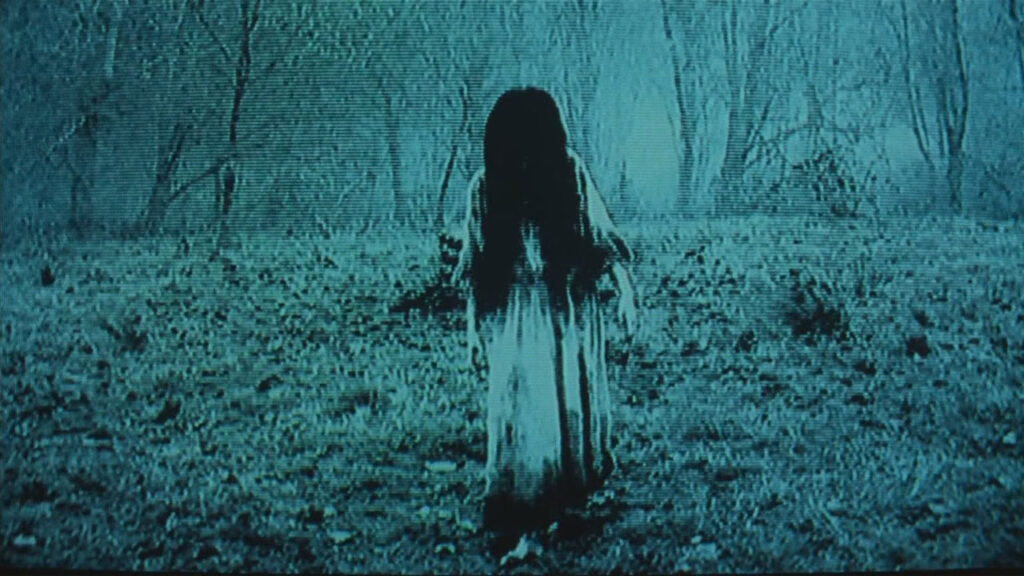
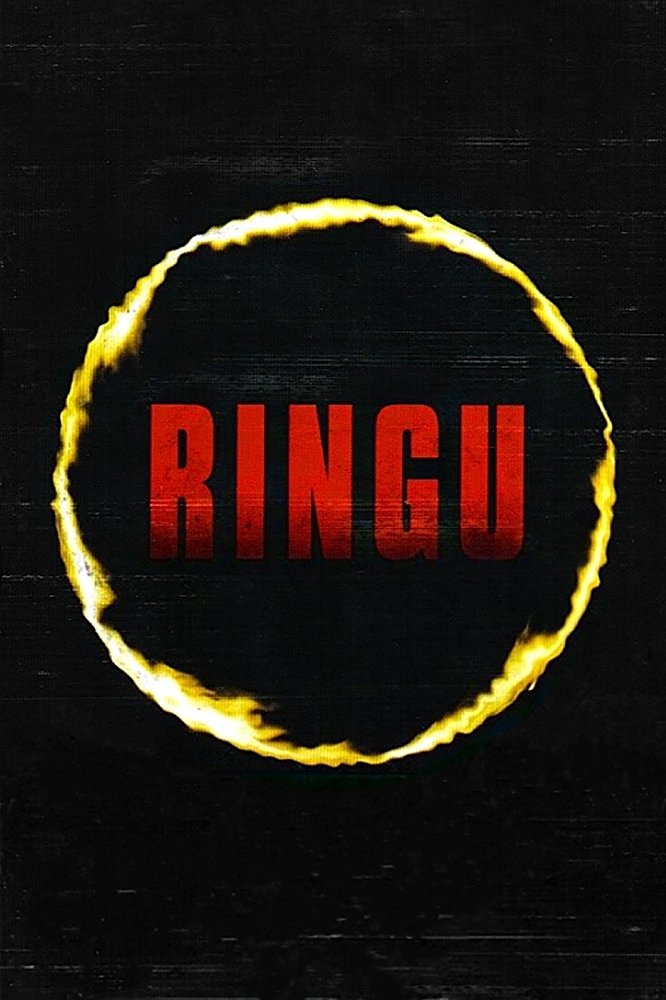
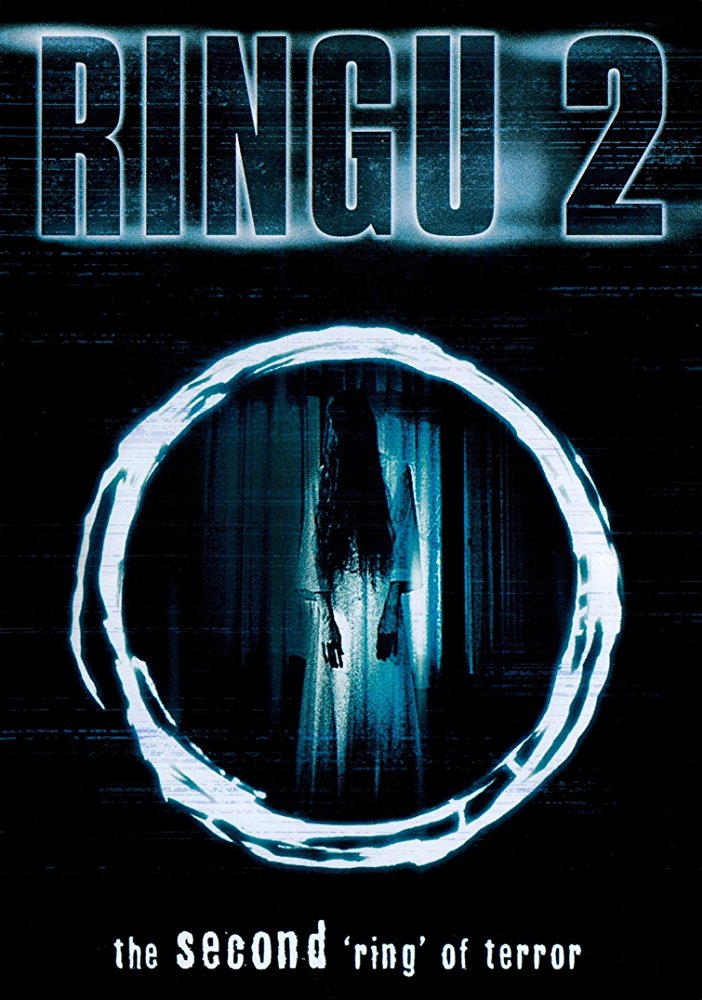
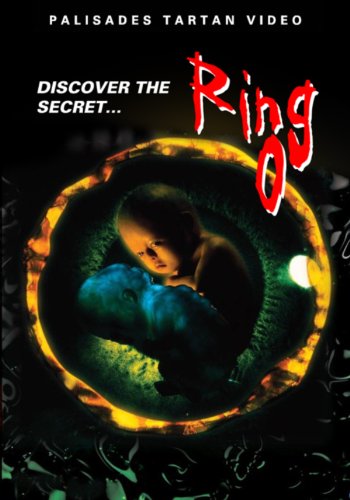

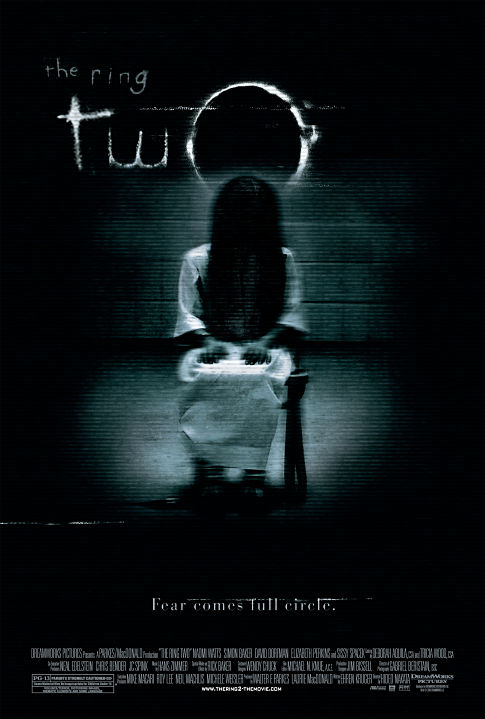
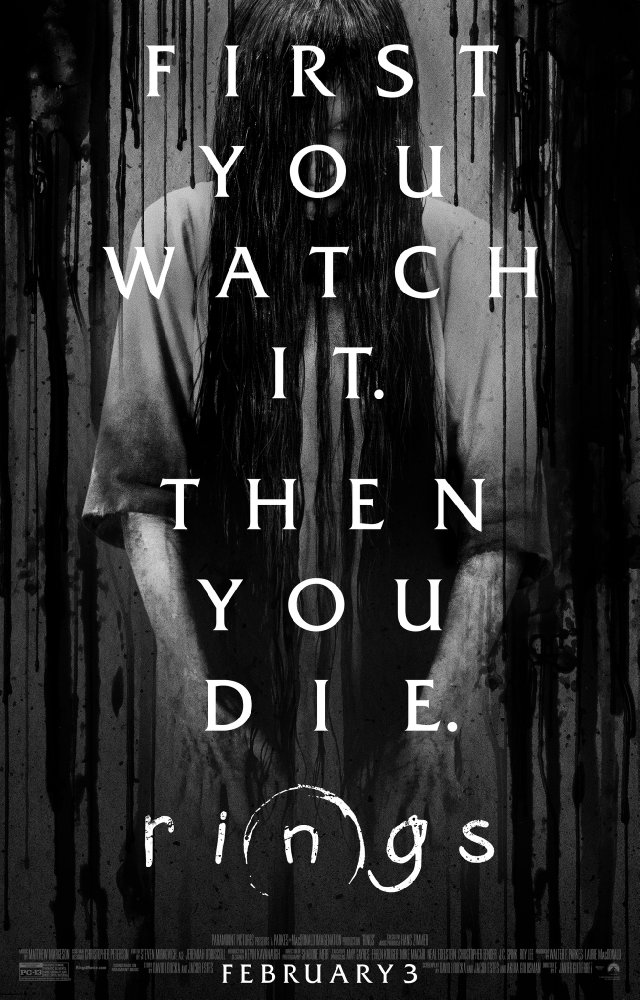
50 Comments
Three
3
Im confused – originally thought it waa 3 now i think its 4
3
Pingback: Film Review: THE NURSERY (2018)
Pingback: VERTIGO RELEASING PREPARE SEQUEL FOR RELEASE
Pingback: VERTIGO RELEASING REVEAL MORE ‘REVENGE’ IN NEW CLIPS
Pingback: Film Review: THE CHANGELING (1979)
Pingback: WITNESS THE 20TH ANNIVERSARY OF ‘RING’ AT THE CINEMA
Pingback: JEFF PAYNE RETURNS WITH NEW SHORT HORROR FILM ‘THE PALE FACED LADY’